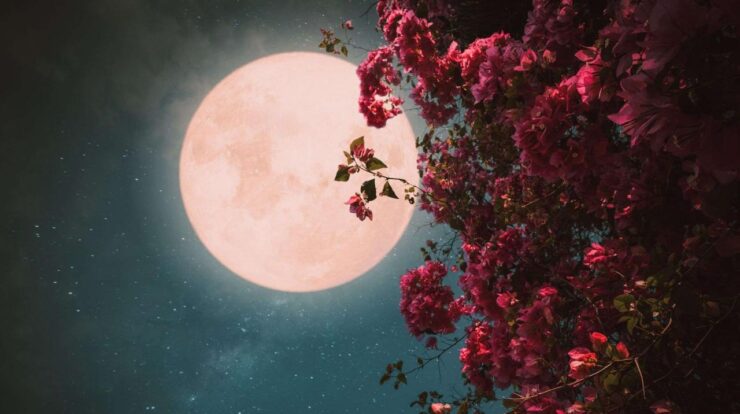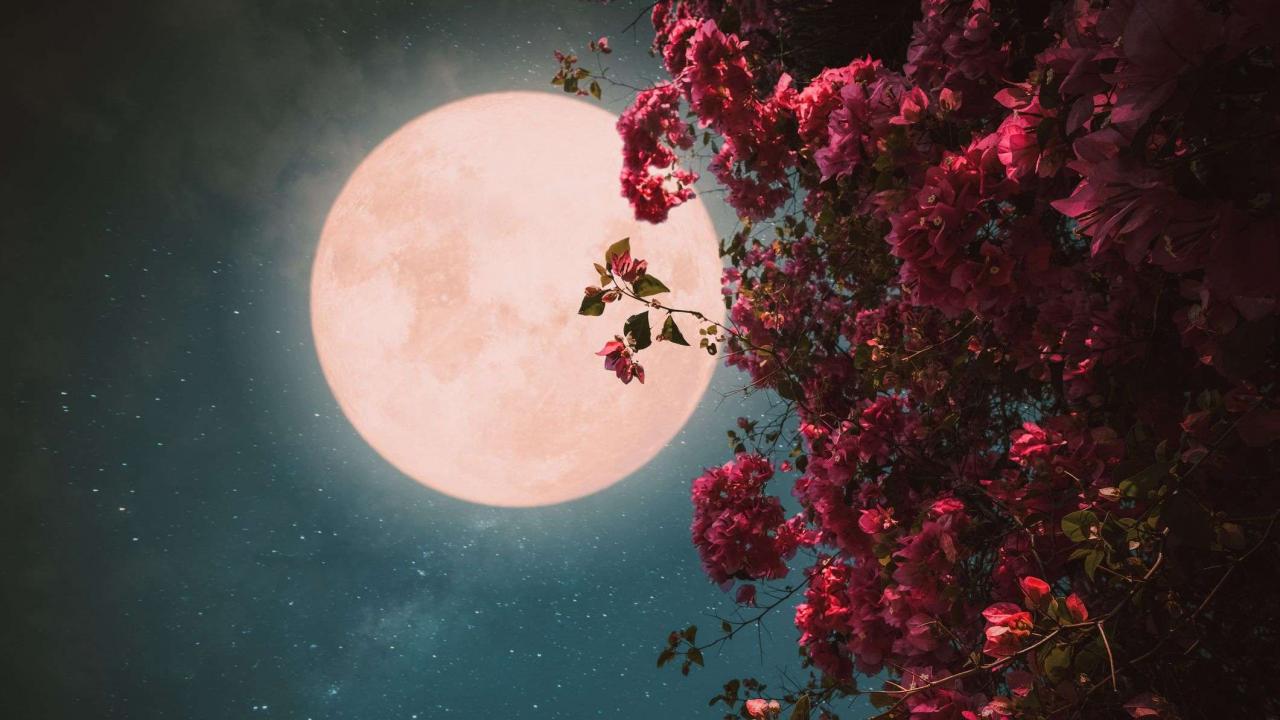
Prepare to witness the celestial beauty of the Pink Moon 2024, a captivating astronomical event that will grace the night sky with its ethereal glow. This full moon, adorned with a delicate pinkish hue, holds cultural significance and offers a breathtaking sight for stargazers and nature enthusiasts alike.
The Pink Moon, despite its name, may not always appear pink. Atmospheric conditions play a crucial role in determining its color, which can range from white to orange or even red. Nevertheless, its unique visual characteristics make it a celestial wonder not to be missed.
Pink Moon 2024: An Astronomical and Cultural Spectacle

The Pink Moon, an enchanting celestial event, will grace the night sky in 2024, offering a mesmerizing spectacle for stargazers and nature enthusiasts alike.
Astronomical Details
The Pink Moon 2024 is the first full moon of spring in the Northern Hemisphere and the last full moon of autumn in the Southern Hemisphere. It will occur on April 19, 2024, at 11:14 p.m. EDT (03:14 UTC on April 20, 2024). This full moon holds special significance as it marks the transition between seasons and signals the arrival of warmer weather.
Cultural and Historical Significance
The name “Pink Moon” does not refer to the color of the moon itself. Instead, it originates from the early bloom of pink wildflowers in North America, known as Phlox subulata, which coincide with the appearance of this full moon.
In various cultures, the Pink Moon has been associated with fertility, renewal, and new beginnings.
Visual Characteristics
The Pink Moon 2024 may not appear pink to the naked eye. The moon’s color is primarily determined by atmospheric conditions, such as dust and pollution. When the moon is low on the horizon, it may take on a reddish or orange hue due to the scattering of blue light by the atmosphere.
As the moon rises higher, it typically appears white or slightly yellow.
| Moon Phase | Color | Description |
|---|---|---|
| Rising | Reddish or orange | Scattering of blue light by the atmosphere |
| Peak | White or slightly yellow | Reduced atmospheric interference |
| Setting | Orange or red | Increased atmospheric interference |
Impact on Nature and Wildlife
The Pink Moon’s bright light can influence the behavior of nocturnal animals, such as wolves and owls, which rely on darkness for hunting. Migratory birds may also adjust their flight patterns in response to the increased moonlight. Additionally, the full moon’s gravitational pull can affect plant growth and blooming cycles, with some plants showing increased growth and flowering under its influence.
Observational Tips, Pink moon 2024
For optimal viewing of the Pink Moon 2024, find a location with minimal light pollution. Clear weather conditions and a high vantage point will enhance the visibility of the moon. Binoculars or a telescope can provide a closer look, revealing the moon’s craters and mountains.
- Choose a location with minimal light pollution.
- Check weather forecasts for clear conditions.
- Use binoculars or a telescope for a closer view.
- Allow your eyes to adjust to the darkness for 15-20 minutes before observing.
- Be patient and enjoy the celestial spectacle.
Photography and Art
Capturing stunning photographs of the Pink Moon 2024 requires careful planning and execution. Use a tripod to stabilize your camera and adjust the exposure settings to capture the moon’s brightness and detail. Consider using a long lens to bring the moon closer, and experiment with different angles and compositions to create unique images.
The Pink Moon has also been a source of inspiration for artists throughout history, with its ethereal beauty depicted in paintings, drawings, and sculptures.
Last Point: Pink Moon 2024

As the Pink Moon 2024 rises, it casts a magical aura upon the natural world. Its gentle light influences wildlife behavior, plant growth, and migratory patterns. By understanding the astronomical, cultural, and visual aspects of this celestial event, we gain a deeper appreciation for the interconnectedness of our planet and the cosmos.
Answers to Common Questions
When will the Pink Moon 2024 occur?
The Pink Moon 2024 will reach its peak illumination on April 10th, 2024, at 11:56 PM Eastern Time (04:56 UTC on April 11th).
Why is it called the Pink Moon?
The name “Pink Moon” originates from Native American folklore and refers to the blooming of wild ground phlox, a pink flower that signals the arrival of spring.
Can the Pink Moon actually appear pink?
While the Pink Moon may not always appear pink to the naked eye, it can sometimes take on a pinkish hue due to atmospheric conditions, such as smoke or dust particles.





